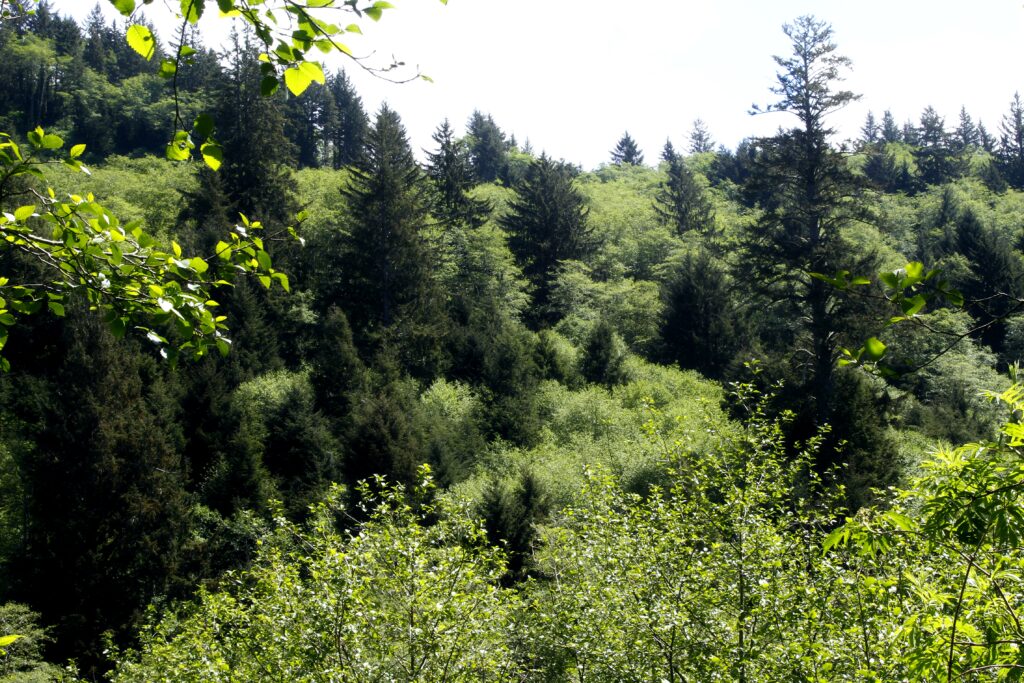Stewardship
Caring for conserved land on the Oregon Coast
NCLC uses three planning elements—protection, passive ecological restoration, and active ecological restoration—to provide a framework for the stewardship planning and actions associated with the properties we hold in conservation.
Protection
Sometimes a piece of land already has it all: high-functioning wildlife habitat, mature native plant structure, no invasive plant issues. When we acquire a gem like this, we know that the best thing we can do is to get out of the way and let nature continue on the path it has been taking for thousands of years. Protection involves securing those intact systems, overseeing their long-term stewardship, and, where possible, working to connect them with a larger landscape to provide even greater function.
A volunteer site steward talks about land PROTECTION at Wahanna Marsh Habitat Reserve
Passive
Passive ecological restoration includes simply halting activities that cause degradation or prevent recovery of an ecosystem, such as stopping grazing or water removal. This approach also includes a lot of patience: providing the time necessary for natural processes to cycle through a sequence of ecological succession. Nature is amazingly resilient and can often regain its balance best by being left alone to sort itself out.
A volunteer site steward talks about PASSIVE MANAGEMENT at Fishers Point Habitat Reserve
Active
After waiting through a period of passive restoration, if a site or system still remains in an ecological state that would not occur naturally, active intervention may be necessary. Such actions can include the reintroduction of beaver, removal of invasive plants, major planting of native species, or in some cases addition of in-stream structures.
Volunteer site stewards talk about ACTIVE MANAGEMENT at Clear Lake Habitat Reserve
